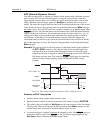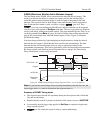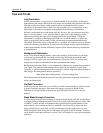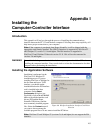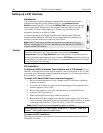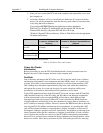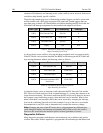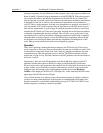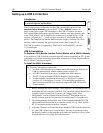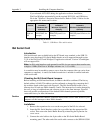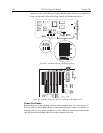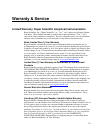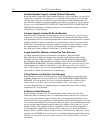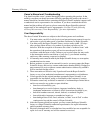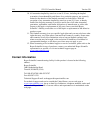
Appendix I Installing the Computer Interface 107
interrupt assignments for each PCI device in the computer. One such program available from
Roper Scientific's Technical Support department is called PCICHECK. When the program is
run, it reports the address and interrupt assignments for the first PCI device it finds. Each
time the spacebar is pressed, it moves on to the next one and reports the address and interrupt
assignments for that one as well. In a few moments this information can be obtained for
every PCI device in the computer. Note that, even though there are generally only three PCI
slots, the number of PCI devices reported may be larger because some PCI devices may be
built onto the motherboard. A good strategy for using the program would be to run it before
installing the PCI Serial card. Then run it again after installing the card and note any address
or interrupt assignments that may have changed. This will allow you to easily focus on the
ones that may be in conflict with address or interrupt assignments on ISA cards. It might be
noted that there are many programs, such as the MSD program supplied by Microsoft, that
are designed to read and report address and interrupt assignments, including those on ISA
cards. Many users have had mixed results at best using these programs.
Operation
There are no operating considerations that are unique to the PCI Serial card. The card can
easily accept data as fast as any Princeton Instruments System now available can send it. The
incoming data is temporarily stored in the card’s memory, and then transferred to the main
computer memory when the card gains access to the bus. The PCI bus arbitration scheme
assures that, as long as every PCI card conforms to the PCI guidelines, the on-board memory
will never overflow.
Unfortunately, there are some PCI peripheral cards that do not fully conform to the PCI
guidelines and that take control of the bus for longer periods than the PCI specification
allows. Certain video cards (particularly those that use the S3 video chip) are notorious in this
respect. Usually you will be able to recognize when memory overflow occurs because the
displayed video will assume a split-screen appearance and/or the message Hardware
Conflict will be displayed (WinView/32 or WinSpec/32). At the same time, the LED on the
upper edge of the PCI Serial card will light.
Users are thus advised not to take any actions that would worsen the possibility of memory
overflow occurring when taking data. In that regard, avoid multitasking while taking data.
Specific operations to avoid include multitasking (pressing ALT TAB or ALT ESC to start
another program), or running a screensaver program.



